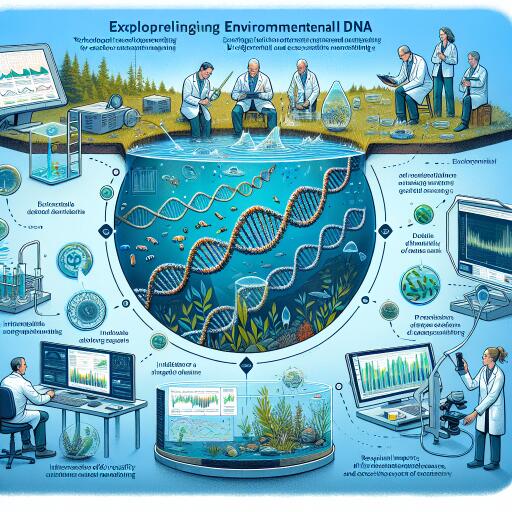
Exploring Environmental DNA (eDNA): A Revolutionary Tool for Biodiversity and Ecosystem Monitoring
Environmental DNA (eDNA) has recently marked a significant transformation in the domains of ecology and conservation. Through the innovative process of sampling DNA from the environment, scientists now possess the capability to study biodiversity and oversee ecosystems with precision and efficacy previously unimaginable.
eDNA pertains to genetic material collected directly from environmental samples such as soil, water, or air, bypassing the necessity for the direct capture or observation of organisms. As organisms interact with their surroundings, they leave behind DNA through skin cells, hair, feces, and other biological materials. This DNA endures within the environment for varying durations, offering a temporal snapshot of the species inhabiting a particular locale.
The eDNA sampling paradigm involves the collection of environmental samples, subsequent extraction of DNA, and thereafter amplifying and sequencing the genetic material. Tools like polymerase chain reaction (PCR) and next-generation sequencing (NGS) empower scientists to discern species from even the tiniest amounts of DNA. Remarkably non-invasive, this methodology is especially advantageous for studying elusive or endangered species.
Applications in Biodiversity Monitoring
One of the key roles of eDNA is in the realm of biodiversity monitoring. Traditional species surveying methods necessitate exhaustive fieldwork, which not only demands considerable time but can also be detrimental to the environment. eDNA presents a less intrusive and more exhaustive alternative. For example, researchers can appraise the biodiversity of a freshwater ecosystem simply by examining water samples for eDNA traces left by aquatic life forms.
In the Great Smoky Mountains National Park, the application of eDNA has successfully cataloged amphibian species across the park’s streams. This groundbreaking approach uncovered several rare and endangered species that traditional survey methods had previously missed.
Early Detection of Invasive Species
Swift detection of invasive species is vital to avert ecological disruption. eDNA facilitates the rapid and precise identification of non-native species before they establish themselves and potentially damage native ecosystems.
In the Laurentian Great Lakes region, eDNA has been extensively utilized to monitor for invasive Asian carp. By detecting eDNA in water samples, authorities can initiate timely interventions to curb the spread of these pernicious fish.
Conservation Efforts Using eDNA
Conservation biologists leverage eDNA to track endangered species and comprehend their distribution and habitat necessities. Such insights are indispensable for formulating robust conservation strategies.
In Australia, eDNA sampling has played a crucial role in assessing the habitat of the critically endangered Eastern Bristlebird. Researchers gathered soil samples from varied locations, identifying regions where these birds were present and subsequently aiding habitat protection initiatives.
Advantages and Challenges of eDNA
Despite its numerous advantages, the eDNA technology does present some challenges. Environmental factors contributing to DNA degradation can compromise result accuracy. Moreover, differentiating between DNA from living organisms and dead organic material poses difficulties. Continuous research endeavors are underway to enhance eDNA methods and mitigate these challenges.
Looking forward, the amalgamation of eDNA with emerging technologies such as remote sensing and artificial intelligence holds great promise for augmenting biodiversity and ecosystem monitoring. Collaborative partnerships among scientists, policymakers, and conservationists are crucial to fully harness the potential of eDNA in preserving our planet’s biodiversity.
Environmental DNA stands as a groundbreaking instrument in ecological study, presenting non-invasive, efficient, and precise means to study biodiversity and monitor ecosystems. Illustrated by real-world cases globally, eDNA harbors the potential to overhaul conservation strategies and contribute to the safeguarding of our natural heritage. By continuously refining and expanding eDNA applications, we can attain profound insights into the intricate tapestry of life on Earth, advancing towards a more sustainable future.





Leave a Reply